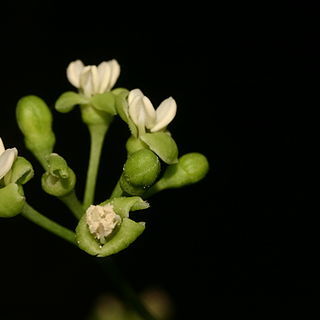Female flowers 4(?5)-merous; calyx-tube ± ellipsoid; petals imbricate, slightly fleshy, deciduous; disk fleshy, epigynous; staminodes alternipetalous, inserted with the petals below the margin of the disk; ovary inferior, 2-locular; style short, columnar or 2-branched; stigmas 2, large; ovules few, 2-seriate on axile placentas
Male flowers 3–4-merous; calyx-tube expanded or cupular; petals imbricate, slightly fleshy, deciduous, inserted below the margin of the fleshy disk; stamens alternipetalous and inserted with the petals; anther-thecae dehiscing by longitudinal slits; pollen grains 3-colporate, spheroidal; rudimentary ovary absent or minute
Flowers in terminal or axillary inflorescences, the male flowers in few-flowered panicles, the female flowers solitary or in groups of 2(3)-nate
Leaves alternate, opposite or subopposite, simple, entire, penninerved, usually petiolate, deciduous; stipules absent
Seeds ± compressed, winged or not; endosperm absent or abundant; embryo straight; cotyledons compressed
Fruit a loculicidally dehiscent capsule, or indehiscent becoming 1-locular
Small trees or shrubs, dioecious
